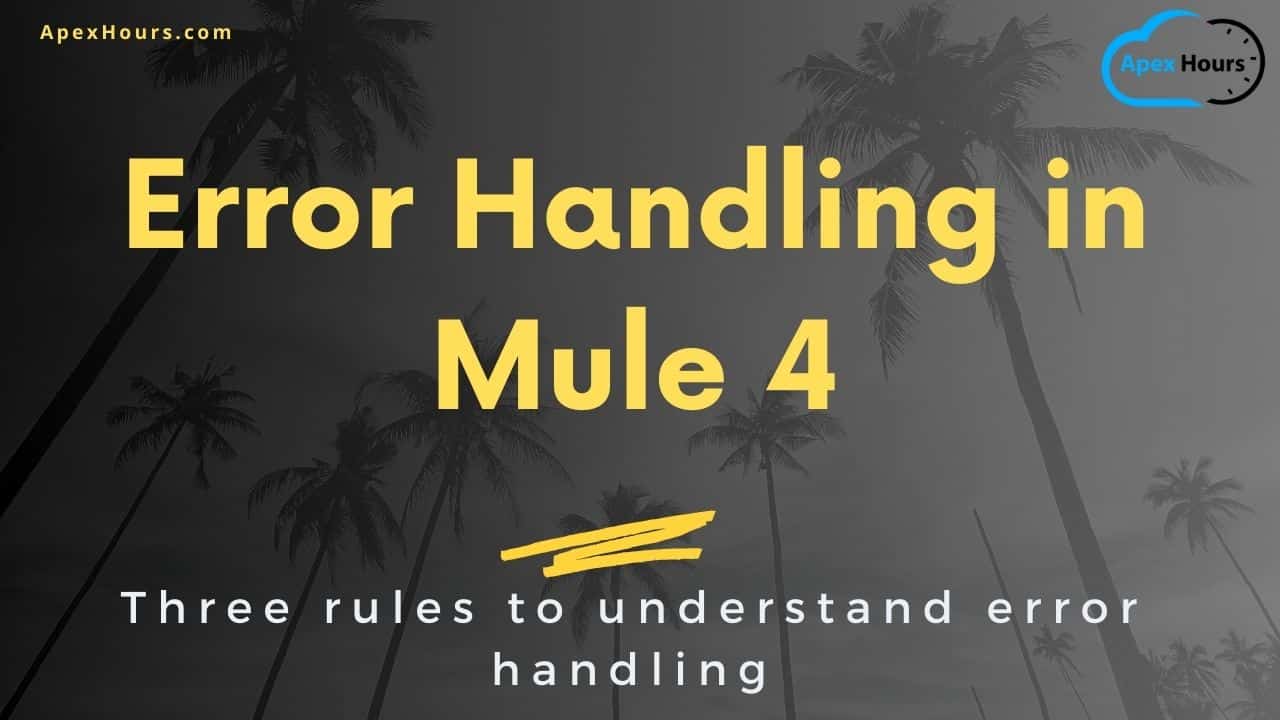Error handling in Mule 4 is critical to building reliable and robust applications. In Mule 4, errors are handled using the Try scope. The Try scope allows you to catch and take errors in your application.
When an error occurs in Mule 4, it’s essential to understand the type of error and the context in which it occurred. Mule 4 provides several types of errors, including system and application errors. System errors occur at the infrastructure level and can be caused by network connectivity or server failures. On the other hand, application errors occur within your application and can be caused by issues such as bad data inputs or invalid configurations.
Error Handing in MuleSoft
An exception occurs when an unexpected event happens while processing. Exception handling is responding to exceptions when a computer program runs. In Mule, we can handle the message exception at different levels.
- At the Project level, using a Default error handler.
- At the Project level, using a Custom Global error handler
- At the Flow level in exception handling, using:
- On Error Continue
- On Error Propagate
- Raise Error.
- Within Flow or at processor level using try scope.
Remember: The error will route to error handling only if it identifies that the error type of that error is dealt with.
Identifying error types in MuleSoft
Mule 4 has one excellent feature of Identifying the errors that can occur within that flow by looking at what kind of connectors are placed there.
Three rules to understand error handling
1: Error handling
- See if anything is present in Error-Handling.
- Even if there are on-error-propagate and on-error-continue blocks, see if that particular error type is handled.
- If NOT, then Mule will use default Error Handling.
- And if any other flow does not call your flow, it will display a default value set in Error-Response and give a status code as 500 bad default if nothing is set manually.
- If any other flow calls your flow, then it will RAISE as an error to the calling flow.
2: Error handling
- If some Error Handling is present in that particular flow and errorType is handled (YES condition for RULE1).
- Check whether it is On-Error-continue or On-Error-Propagate.
- In both cases, Mule will execute all components within that block.
- Next, follow Rule 3, which is very important !
3: Error handling
If the error is handled using On-Error Propagate, it will return an error to the calling flow. If the error is dealt with using On-Error Continue, it will not raise an error back to the calling flow and continue to the next processor after “flow-ref” and continue the process as it is.
But it will not continue to other processors in the same flow where error is handled (in On-Error Continue Case).
Summary
Overall, error handling is critical to building reliable and robust applications in Mule 4. By using the Try scope and other error-handling mechanisms provided by Mule 4, you can ensure that your application can handle errors consistently and reliably. Check out our complete MuleSoft Training to learn all about MuleSoft. We have 15+ session for you with Final Project.






